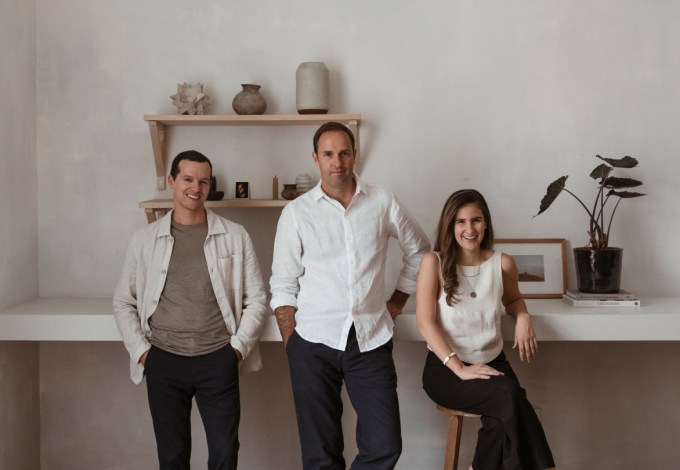News: Elon Musk’s Loop gets Autopilot — and an intruder
Less than two weeks after its official launch, The Boring Company’s Loop system in Las Vegas had its first security breach. On June 21, the morning of the final day of the International Beauty Show, an “unauthorized vehicle” joined the system’s fleet of Tesla taxis underground, emails between the Loop’s operations manager and a Clark
Less than two weeks after its official launch, The Boring Company’s Loop system in Las Vegas had its first security breach.
On June 21, the morning of the final day of the International Beauty Show, an “unauthorized vehicle” joined the system’s fleet of Tesla taxis underground, emails between the Loop’s operations manager and a Clark County official show. The emails were obtained by TechCrunch under public records laws.
The emails provide new insight into the operations of the Loop beyond the intrusion, including the system’s surprising reliance on a non-Tesla electric vehicle, plans to allow Tesla vehicles to use its Autopilot driver assistance system and confirmation within company ranks that the technology is not autonomous.
The Boring Company (TBC) called the Las Vegas Metro Police to handle the intrusion. “The driver of the unauthorized vehicle was cooperative and eventually escorted out of the system,” reads one email.
While there were no injuries or fatalities as a result of the security breach, the incident could be embarrassing for TBC, which has touted the security and safety of its $53 million system to the LVCC.
According to a management agreement between TBC and the LVCC, the system is supposed to have “physical barriers [to] guard against entry of accidental, rogue, or otherwise unauthorized vehicles into the tunnels.” These include security gates on roadways into the system, and dozens of concrete bollards surrounding its ground-level stations.
Neither TBC nor LVCC responded to inquiries about the incident. TechCrunch will update the article if either party responds to questions.
Autopilot gets a chance
The emails obtained by TechCrunch provide more than the exploits of a thrill-seeking trespasser.
The emails also detail plans by TBC to increase the number of Tesla vehicles in the LVCC Loop from 62 to 70, and to allow the use of Tesla Autopilot technologies. Until now, TBC has had to disable all driver assistance technologies on its vehicles, which are operated by human drivers.
The new scope of operations will require the use of seven active safety technologies — automatic emergency braking, front and side collision warnings, obstacle-aware acceleration, blind-spot monitoring, lane departure avoidance, emergency lane departure warning as well as two “full Autopilot” technologies: lane centering and traffic aware cruise control.
TBC’s justification for using Autopilot was set out in a letter to the Clark County Department of Building & Fire Prevention in June, obtained by TechCrunch along with the emails.
TBC president Steve Davis wrote that disabling the features “actively removes a layer of safety,” from a “proven, road-legal technology.” Davis quoted Tesla’s Safety Report for the first quarter of 2021 that claims Tesla drivers operating with Autopilot experienced crashes at less than a quarter the rate of Tesla drivers operating without Autopilot or active safety features, per mile driven. “As demonstrated… disabling these features in Tesla vehicles increases the likelihood of an accident,” wrote Davis.
The National Highway Traffic Safety Administration (NHTSA), however, last week opened a formal safety probe into the technology, following a number of crashes.
Jerry Stueve, the director of the building and fire protection in Clark County, replied in an email: “We will take this under consideration, although it may help in our evaluation of this request if you can better define the term ‘autodrive’ and what it entails.”
“Agreed that the term ‘Autopilot’ is often unclear and can mean many different things depending on the vehicle and scenario,” replied Davis. (In this, he apparently disagrees with his boss, Elon Musk, who has called criticism of the Autopilot name as misleading “idiotic.”)
“Agreed that the term ‘Autopilot’ is often unclear and can mean many different things depending on the vehicle and scenario.” – Steve Davis, TBC
“These are not ‘autonomous’ nor ‘self-driving’ vehicles,” continued Davis. “The use of Tesla Autopilot and active safety features adds additional layers of safety while operating the vehicle, however the use of the features still requires a fully attentive driver who is ready to take over the wheel at any moment.”
Autopilot versus autonomous driving
This distinction is key, as it appears to contradict what TBC has promised LVCC since it first pitched the Loop system. In its land use application in May 2019, prior to signing the construction construct, TBC wrote: “Tesla Autonomous Electric Vehicles (AEVs) will carry passengers in express, underground tunnels to three underground stations.”
A planning document in July 2019 stated: “Utilizing autonomous electric vehicles in underground tunnels is a unique transportation solution that will minimize disruptions and conflicts to existing buildings and transportation systems.” It has used similar language in applications ever since, including for a proposed Vegas-wide Loop with dozens of stations.
In January, TechCrunch obtained a management agreement between LVCC and TBC that stated: “[The LVCC] procured the People Mover System, in part, because of the ability for People Mover System vehicles to operate autonomously … The Agreement recognizes the intent for the System to move from drivers in the vehicles to autonomous operations and provides for a fee renegotiation, no later than December 31 2021, incorporating this expected transition in operations.”
That deadline now seems almost certain to be missed. In June, Stueve told Davis: “As stated early in the project, the approval of autonomous operation will require extensive scrutiny, testing and validation. This process could take a significant amount of time.”
In reply, Davis wrote: “I want to make sure that it is clear that we are not asking for autonomous or self-driving features/operations.”
Humans in the Loop
The problem is two-fold. One is that Tesla’s Autopilot system may not be able to operate completely without a driver for some time to come. The second, arguably more serious, challenge is that the Loop is heavily reliant on its drivers to meet the safety requirements for underground transportation systems, laid out in national standards. Passengers of such systems, whether monorails, subways or using electric cars, must be safe in the event of power outages, fires, floods and other emergencies.
The LVCC Loop’s basis of design document, obtained by TechCrunch along with the emails, states: “[Our] trained drivers serve as the system’s key layer of safety. In the event of an emergency, actions taken by drivers to direct passengers in the proper and safe directions are the primary risk mitigating responses.”
Other documents obtained by TechCrunch from BFP confirm this. In the case of fire, the driver will “assist with deboarding passengers, and guide passengers on foot to the closest exit. Driver issues verbal instructions and may physically assist passengers.” As the driver leads passengers by walking ahead of them, they must “consistently look back to ensure every passenger is following closely behind.”
Drivers are responsible for assessing and responding to unruly or misbehaving passengers, and, in fact, for supervising the performance of the Autopilot itself, says TBC. “The [Loop] will have drivers, ensuring that there is always someone overseeing the use of active safety features who is ready to take over braking and steering as needed,” wrote Davis in June.
None of the dozens of documents or hundreds of emails obtained by TechCrunch, including those detailing the LVCC Loop’s future expansion, describe a path or timetable for TBC to move toward fully autonomous operation.
In response to a questionnaire on how the Loop will meet the American Society of Civil Engineers’ safety principles for autonomous systems, TBC responded: “Criteria specific to autonomous operation are not applicable to the [LVCC Loop], as the system will have drivers to operate vehicles.”
Only time will tell whether what TBC is telling Clark County, or what it is telling LVCC, is closer to how the Loop will operate in the future.
In the meantime, if the Loop vehicles are not yet driverless, can the LVCC at least expect them all to be the latest Tesla models? Perhaps not.
Another requirement for the Loop is that it complies with the Americans with Disabilities Act (ADA). In an email to Clark County officials in July, a TBC executive noted that it was going to buy a non-Tesla ADA electric vehicle for the LVCC Loop.
Although the email did not specify the model, it has a low-range lead-acid battery with the same specification as the Tropos Motors Able electric utility vehicle. Neither Tropos nor TBC responded to inquiries.













